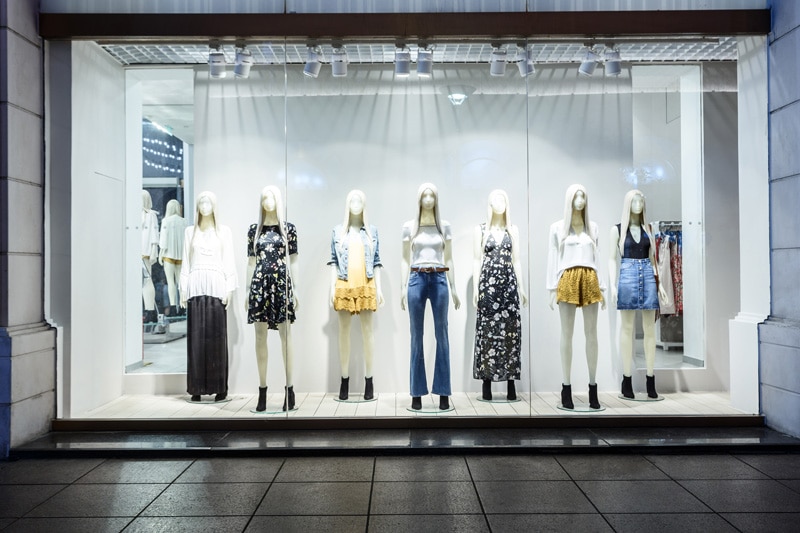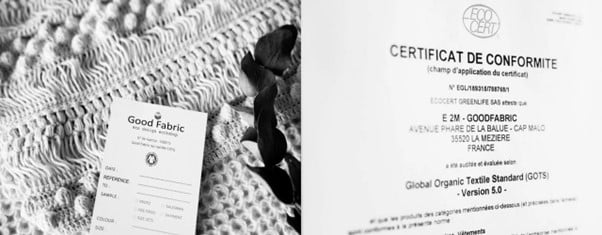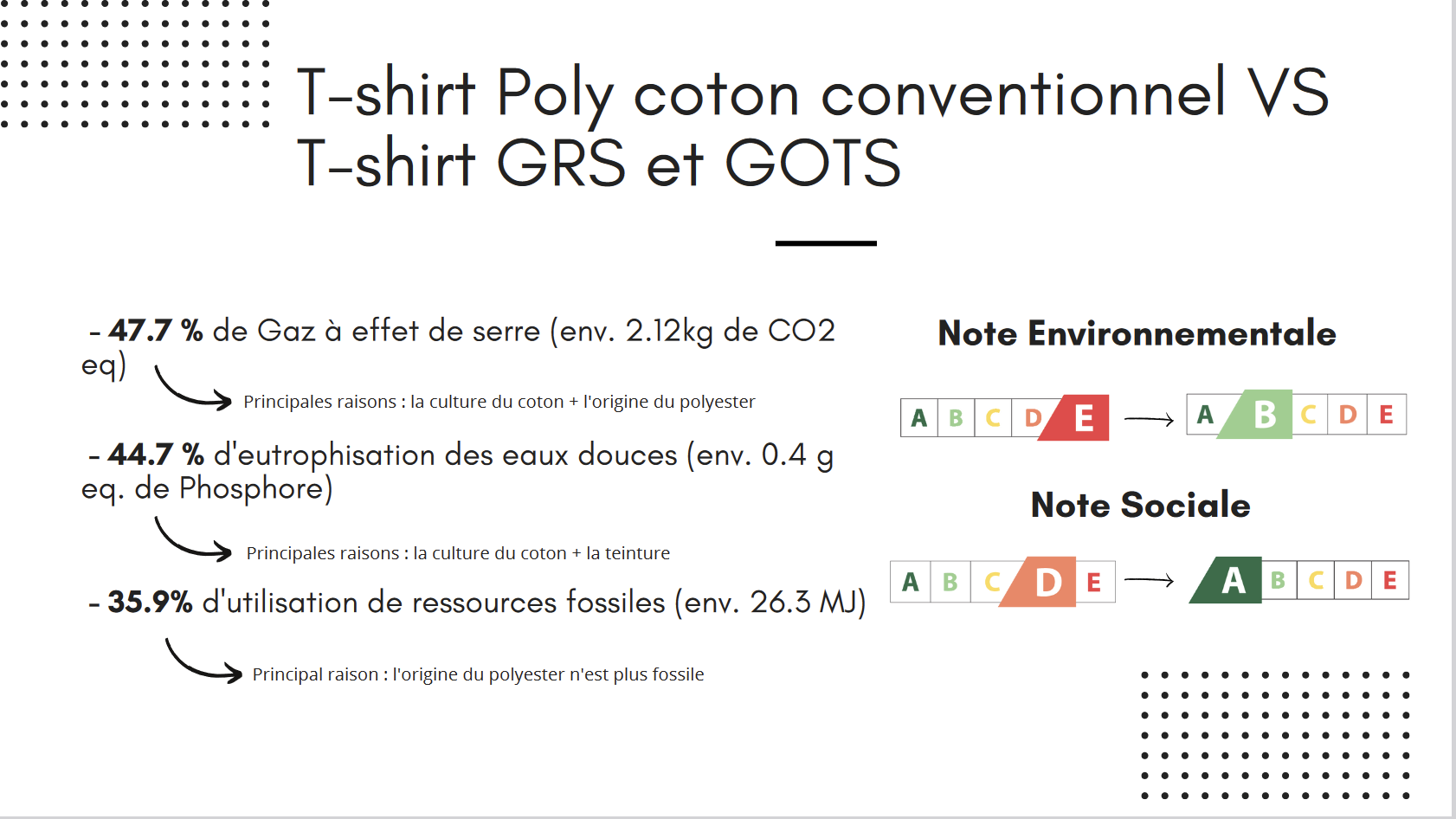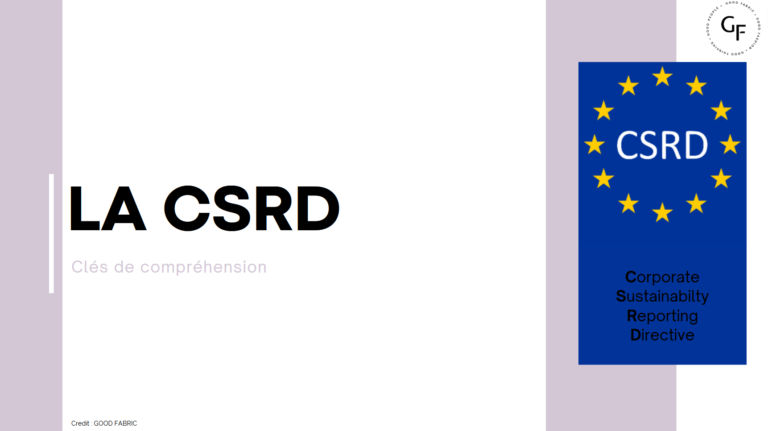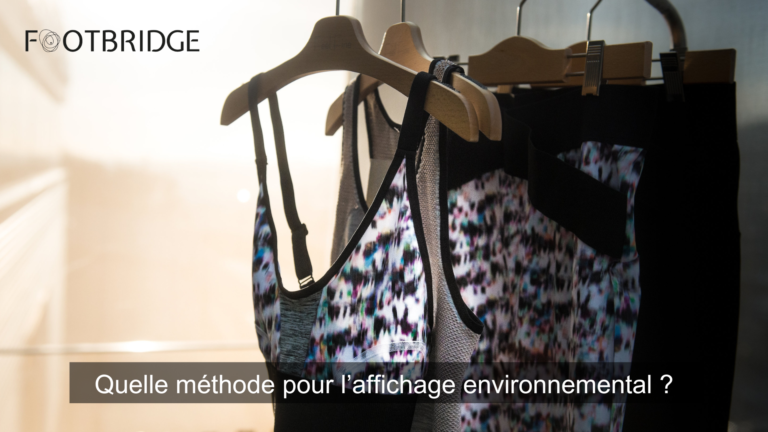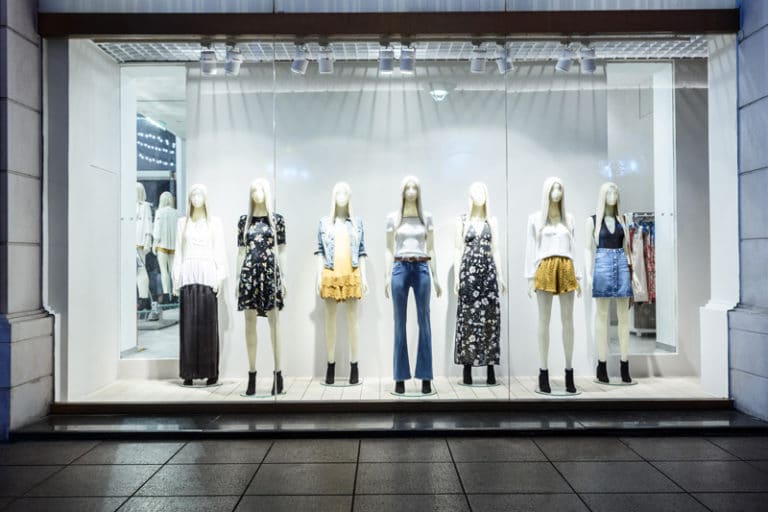The textile industry, with its massive carbon footprint, has become a focal point in current environmental debates. At Footbridge, we are aware of this issue and are committed to helping industry stakeholders understand and reduce the environmental impact of their products.
According to ADEME (the French Environment and Energy Management Agency), the textile industry generates 4 billion tons of CO₂ equivalent per year, surpassing the combined impact of international flights and maritime traffic. Moreover, textiles rank as the third largest water consumer worldwide, after wheat and rice cultivation.
Faced with these alarming figures, our role is not just to observe. We have developed a solution for impact measurement and life cycle analysis that allows companies to better control their manufacturing conditions and meet the growing expectations of their customers for more responsible clothing.
In this article, we will share the findings from our research and studies on the carbon footprint of the textile industry. We’ll discuss the main sources of emissions, the challenges to overcome, and possible solutions to make the industry more sustainable. We will also rely on data from ADEME to provide a broader perspective on this topic.
Sommaire
Understanding the carbon footprint of the textile industry
The carbon footprint measures all greenhouse gas emissions produced directly or indirectly by an activity. In the case of the textile industry, this footprint is particularly significant, due to several key factors that occur throughout the life cycle of a garment.

credit : Footbridge
- Production of raw materials : Whether it’s animal, vegetable, or synthetic fibers, raw material production requires significant resources. For instance, livestock farming for animal fibers generates greenhouse gas emissions, while cotton cultivation and other plants demand large amounts of water and chemicals. Synthetic fibers, often derived from petroleum, represent a non-renewable resource.
- Manufacturing of clothing : Transforming raw materials into clothing is an energy-intensive process that also generates greenhouse gas emissions. Furthermore, working conditions in many producing countries can be precarious, adding a social dimension to the carbon footprint.
- Dyeing : The dyeing of textiles is another significant contributor to the carbon footprint. The chemicals used and the dyeing processes are usually energy-intensive and are often performed in countries with a heavily carbonated energy mix.
- Transport : Clothing is often manufactured in countries far from sales points, necessitating long-distance transport, sometimes by air, thereby contributing to greenhouse gas emissions.
- Use of clothing : The environmental impact does not stop once the garment is sold. Regular washing, drying, and ironing of clothes consume water and energy, further adding to the carbon footprint.
- End of life : Finally, when clothes are no longer worn, they are often discarded in landfills or incinerated, contributing further to pollution and greenhouse gas emissions.
Focus on animal and synthetic fibers
Animal and synthetic fibers are particularly problematic in terms of carbon footprint. For animal fibers, the impact largely stems from livestock farming (and the methane they emit) and the energy-intensive fiber processing.
For synthetic fibers, the impact arises from the extraction and transformation of fibers, often in countries with a highly carbonated energy mix. The pollution issue with synthetic fibers is multifaceted. Life Cycle Assessment (LCA) calculations for this material do not account for all impacts related to petroleum extraction nor the pollution from microplastics during garment washing.
An ADEME infographic illustrates these points, showing the environmental impact of the fashion industry at each stage of a garment’s life cycle: https://multimedia.ademe.fr/infographies/infographie-mode-qqf/
At Good Fabric, we have long been working on developing ethical and bio-sourced supply chains. All materials have an environmental impact, but the use of plant-based or animal-based materials, provided they are bio-sourced, is incomparable to those derived from petrochemicals (even recycled).
Understanding these factors is essential to identify where improvements can be made and how to reduce the carbon footprint of the textile industry.
What is the role of Footbridge in reducing carbon footprint ?
At Footbridge, we have developed specific tools to help textile industry companies understand and reduce their carbon footprint. Our work involves analyzing the data necessary for impact calculation and life cycle analysis :
- Life cycle analysis service at Footbridge : We also offer a life cycle analysis service that allows companies toassess the environmental impact of their products at each stage of their life cycle, from the production of raw materials to the end of the product’s life. This detailed analysis helps companies identify hotspots in their carbon footprint and implement effective reduction strategies.
A key aspect of our work is the promotion of rigorous environmental standards, such as GOTS, OEKO TEX, or GRS certifications.
- GOTS label (Global Organic Textile Standard) : This is the most demanding standard for organic textiles. It covers all manufacturing stages, from the production of organic fibers to the finished product, incorporating dyeing without wastewater discharge and without hazardous chemicals.
- OEKO TEX label (standard 100 class 1) : Certifies the safety of the garment and the non-use of toxic substances during the dyeing and finishing phase.
- GRS label (Global Recycle Standard) : Applies to recycled materials. It certifies the origin of materials and also covers dyeing, without discharge and without hazardous chemicals.
Comparative study
We conducted a comparative study showing how the use of fibers from organic farming and recycled fibers can reduce carbon impact.
This study compared two types of t-shirts : a conventional poly-cotton t-shirt and a GRS and GOTS certified t-shirt.
The certified t-shirt was composed of 50% cotton from a GOTS supply and 50% recycled polyester certified GRS. The results showed that this t-shirt had 47.7% less greenhouse gas emissions, 44.7% less eutrophication of fresh waters, and 35.9% less use of fossil resources compared to the conventional t-shirt.
Similarly, a comparison between a conventional cotton jean and a 100% organic cotton jean certified GOTS showed that the GOTS certified jean had 12.2% less greenhouse gas emissions, 41.6% less eutrophication of fresh waters, and 11.1% less use of fossil resources compared to the conventional jean.
These results clearly demonstrate the effectiveness of fibers from organic agriculture and recycled fibers in reducing carbon impact. They also highlight the importance of GOTS and GRS labels allowing for environmentally respectful production practices.
We are convinced that understanding, transparency, and innovation are keys to reducing the carbon footprint of the textile industry. We are determined to help companies embark on this path towards a more sustainable fashion.
Calculate the eco-score of your clothing
Master the environmental impacts of your designs with our dedicated platform.
Schedule a demo5 solutions to reduce your carbon footprint
Reducing the carbon footprint of the textile industry requires a multifaceted approach that goes beyond simply modifying production processes. It also involves changing our consumption habits and our relationship with clothing.
The ADEME infographic offers several key solutions for reducing the carbon footprint of our wardrobe:
- Buy less but better : Instead of buying many lower-quality clothes that will be quickly replaced, opt for higher-quality pieces that will last longer. Look for clothing made from sustainable materials and produced ethically.
- Take care of your clothes : By taking care of your clothes, you can extend their life and reduce the need to replace them. This includes washing at lower temperatures, air drying instead of using a machine, and following the manufacturer’s care instructions.
- Buy second-hand clothing : Buying second-hand clothing is an excellent way to reduce the carbon footprint of your wardrobe. Not only does it prevent the production of new clothing, but it also gives a second life to garments that could have ended up in a landfill.
- Repair your clothes : Instead of throwing away a garment at the first sign of a tear or missing button, consider repairing it. This can significantly extend the life of a garment and reduce the need to produce new clothing.
- Give a more environmentally friendly end-of-life to your clothes : When a garment can no longer be worn or repaired, consider more environmentally friendly options than simply disposing of it in a landfill. This can include recycling, donating to charity, or even repurposing into cleaning rags or insulation.
By adopting these practices, we can all play a role in reducing the carbon footprint of the textile industry and transitioning to a more sustainable fashion.
What are the limits and challenges of this approach?
While recognizing the importance of reducing the carbon footprint in the textile industry, it is also essential to understand the limitations and challenges associated with this approach.
Carbon footprint calculations are a valuable tool for assessing the environmental impact of textile products. However, they have their limitations. For instance, the durability of products is not considered in these calculations. A garment that lasts longer may have a lesser environmental impact, even if its production is more energy-intensive. Likewise, these calculations do not take into account the social impact of textile production, such as working conditions and fair wages…
Moreover, greenhouse gas emissions are not the only impact of the textile industry. It is very important to also consider the impact on biodiversity, pollution, and water consumption, and of course, working conditions across the entire supply chain.
Reducing the carbon footprint of the textile industry is a significant challenge. It requires changes at all levels of the production chain, from the source of raw materials to the end of life of products. It also involves changing consumer behaviors and promoting a culture of sustainable fashion. Furthermore, it is essential to work with governments and regulators to implement policies that encourage sustainability.
At Good Fabric, we believe that despite the obstacles, a more sustainable future for the textile industry is not only possible but necessary. We are committed to playing our role in achieving this future.
Conclusion
The textile industry has a significant environmental impact, with a considerable carbon footprint at every stage of a garment’s life cycle. However, there are ways to reduce this impact. Choices of more sustainable raw materials, more energy-efficient production processes, more responsible consumption practices, and more environmentally friendly end-of-life options for garments can all help reduce the carbon footprint of the textile industry.
At Footbridge, we are committed to helping textile industry companies understand and reduce their carbon footprint through our life cycle analysis service.
However, the responsibility does not rest solely on the shoulders of producers. Consumers also have a role to play. By choosing to buy less but better, taking care of their clothes, and giving them a more environmentally friendly end of life, we all contribute significantly to reducing the carbon footprint of our wardrobe.

